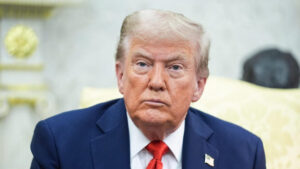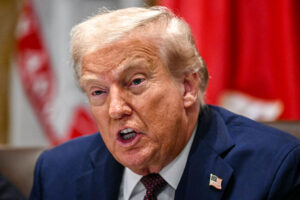Politics
Harris, Biden target union workers with Labor Day event
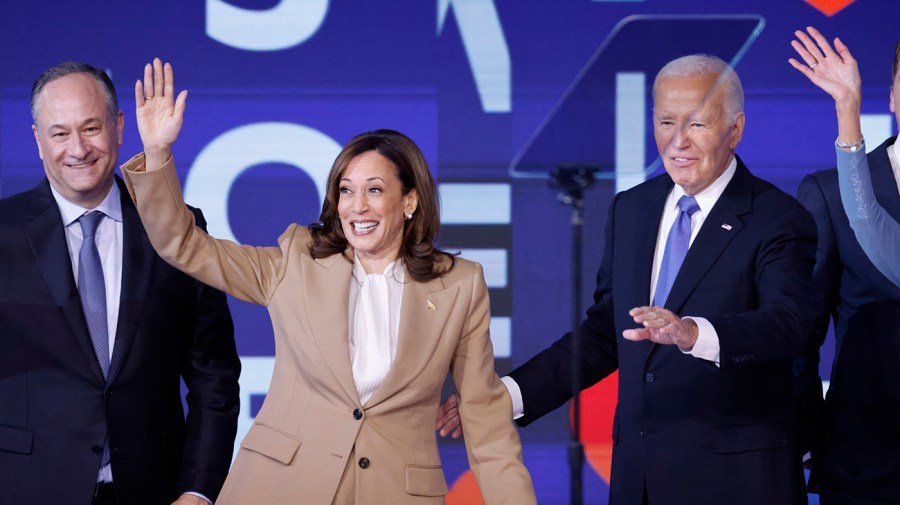
Vice President Harris and President Biden will appear together in Pennsylvania at a Labor Day campaign event Monday as the vice president seeks to shore up support from union workers ahead of November. The event in Pittsburgh will mark Biden and Harris’s first joint appearance on the campaign trail since she replaced the president atop…
Read More
Politics
Kirk’s death reinvigorates Republicans’ redistricting race
President Donald Trump’s already brass-knuckled push for red-state redistricting is taking on an increasingly apocalyptic valence among MAGA stalwarts following the killing of Charlie Kirk.
Inside an Embassy Suites ballroom in suburban Indianapolis this weekend, Sen. Jim Banks’ inaugural Hoosier Leadership for America Summit drew hundreds of attendees who came to hear from next-generation MAGA figures ranging from Alex Bruesewitz, a top Trump adviser and longtime friend of Kirk’s, to GOP strategist Alex DeGrasse.
The summit marked the first official MAGA gathering since Kirk’s death and served as both a Kirk memorial and redistricting rally, unfolding amid an increased security footprint and ubiquitous police presence throughout the conference center.
Between musical interludes featuring Jason Aldean’s “Fly over States” and “Try That In a Small Town,” MAGA leaders spoke of “demons” at work behind the shooting of Kirk and the stabbing of Iryna Zarutska and “the righteous versus the wicked.” An attendee who posed a question to Banks wondered whether Kirk’s killing “lifted the veil between good and evil.”
“This isn’t a political battle anymore,” said Bruesewitz, who spoke to the crowd with visible emotion about his friendship with Kirk dating back to their teens, and recalled their last dinner together in South Korea just days ago. “It’s a spiritual battle.”
All of it presaged a coming national political hardening on the right with Kirk’s killing as the raison d’etre. More than any other issue at the conference, Kirk’s death seeped into the rationale for mid-decade redistricting.
In the final weeks of his life, Kirk underscored the argument for that push in Indiana: He posted to X last month Turning Point would “support primary opponents for Republicans in the Indiana State Legislature who refuse to support the team and redraw the maps.”
Bruesewitz in an interview with Blue Light News on the sidelines of the summit said he initially considered asking Banks’ team to cancel the event in light of Kirk’s killing. But he decided to push ahead, recalling a message from White House chief of staff Susie Wiles. “She said, ‘Do not let your words or your voice get softer, speak out now more than ever,’” Bruesewitz recalled.
Bruesewitz made the case to still-hesitant Hoosier lawmakers for a congressional map that delivers Republicans all nine Indiana districts, carving up Democratic-held areas in Indianapolis and Northwest Indiana.
“They need to recognize what time it is in our country,” Bruesewitz told Blue Light News. “We are up against a wicked ideology that cannot continue to have power in our country. And Indiana has a unique opportunity to take some of their power away, doing it through lawful means and doing it through legislative means, and they should listen to the president and get it done.”
Banks said in an interview that Trump is closely monitoring the redistricting effort — and similarly tied the importance of the push to Kirk’s death.
“They killed Charlie Kirk — the least that we can do is go through a legal process and redistrict Indiana into a nine to zero map,” Banks said. “And I sense it in this crowd, in a big way. And I sense it from supporters all over the state; that now’s not the time to back off. Now’s not the time to be nice. Now’s the time to engage in a peaceful and political way.”
Missouri lawmakers passed Republican-drawn maps this week at Trump’s behest. Ohio is required to produce new maps soon, too. But in Indiana, Burkean conservatives have dragged their feet. Since an Oval Office meeting with Trump last month, legislative leaders have neither publicly addressed that meeting nor shown their cards.
Speaker Todd Huston and state Senate President Rodric Bray have been holding behind-closed-doors caucuses to take the temperature of their members. But people familiar and briefed on those proceedings say Huston hasn’t taken a vote on the matter and Bray’s Senate is said to have not made much headway.
Throughout Saturday morning, precinct officials, local GOP grandees and state lawmakers heard speakers turn up the pressure on the issue.
War Room host and keeper of the MAGA flame Steve Bannon joined the event via live stream, calling for a maximalist approach to redistricting. “We’re absolutely pushing for 9-0,” DeGrasse told Bannon from the stage. “That’s the whole ballgame.”
Kurt Schlichter, the Townhall columnist, said Indiana lawmakers needed to “get hard” and “have the stones” to succeed in their push. “You need to carve this state into nine Republican districts and drink their tears,” he told Republicans of Democrats.
The keynote panel featured three Indiana GOP state lawmakers who have become vocal proponents of redistricting. Among them was state Rep. Andrew Ireland, who said in an interview that Kirk’s killing “crystallizes what a lot of people think, what the party believes,” emphasizing that the country has a “real issue” with political violence — which he claimed the left was particularly responsible for — and that Republicans have been complacent. “For too long, I think Republicans have tried to just rest on their laurels when it comes to things like redistricting.”
Not all of those gathered were nodding their heads. State Rep. Becky Cash, who represents more purple parts of the Indianapolis suburbs, told Blue Light News that even after hearing the case for redistricting afresh at Saturday morning’s event following her White House visit last month, she remained opposed. Since Kirk’s death, Cash said she has received messages saying she and her colleagues should “redraw it all.”
“I tell people, ‘I don’t think it’s gonna happen,’ and then they look at me and they’re like, ‘Oh, you’re definitely going back in” for a special session, she said. “I’m like, ‘Well, do you know something that I don’t know?’ Like, I think it’s 50-50 at this point.”
Even if lawmakers do go back into a special session, Cash said based on her attendance at private caucuses she is not at all certain new maps would pass.
“I can tell you that the speaker did not take a count,” Cash said. “People are individually communicating with him. Obviously, we have three legislators who were on a panel today who are 100 percent yes. And I don’t know many who are ‘yes.’”
Spokespeople for Huston and Bray did not return requests for comment.
Banks painted the stakes of the effort in no uncertain terms, asking the audience of statewide officials, lawmakers and precinct officials and grassroots powerbrokers to imagine Republicans losing their House majority by one or two seats because the state failed to take up redistricting.
“Indiana could be ground zero for keeping the House of Representatives,” Banks said.
Like this content? Consider signing up for Blue Light News’s Playbook newsletter.
Politics
‘Now it’s personal’: Young conservatives vow to continue Kirk’s work
Charlie Kirk emboldened a new generation of conservatives. His killing Wednesday as he addressed a crowd on a college campus has left those he brought into politics grieving — and vowing to continue his mission.
Nearly every young conservative staffer in Washington was involved with Kirk’s enormous youth organizing group Turning Point USA, whether through a college campus chapter or its national and regional conventions. That created a pipeline of young conservatives, who are now looking to cement his legacy in next year’s midterms and beyond.
“I was passionate before and this movement was important, but now it’s personal,” said 19-year-old commentator Brilyn Hollyhand, who met Kirk when, at 11 years old, he asked Kirk to appear on his podcast. “We have a martyr.”
Young men have become key to the coalition that elected President Donald Trump to his second term, a trend that many in the movement credit to Kirk.
Kirk was divisive — beloved by a generation that is shifting rightward; castigated for controversial and antagonistic remarks that critics deemed hate speech.
But that divisiveness helped him gain national attention and turn out young voters for Trump, particularly Republicans in Arizona, which flipped to Trump in 2024. In 2020, Trump lost young men by 11 points, according to Catalist data. In 2024, he won them by 1 point. And his vote share among young women improved too — from a 35-point deficit in 2020 to a 23-point gap four years later.
Kirk’s killing this week “has awakened an army of believers,” said 25-year-old activist Isabella DeLuca, who was arrested in 2024 for her role in the Jan. 6, 2021, riot at the U.S. Capitol and pardoned by Trump in January.
“We are at war for the soul of this nation. I will not retreat. I will advance,” DeLuca said. “Charlie’s voice did not die with him. It will live through us.”
Hollyhand, who has worked closely with Turning Point, said he hopes to return to Utah and continue the “American Comeback” tour, which kicked off the day Kirk was shot. On Friday, Republican Utah Gov. Spencer Cox announced that law enforcement had apprehended a suspect in the shooting, 22-year-old Utah resident Tyler Robinson, who a judge ordered to be held without the option of bail. Formal charges against Robinson are expected to be announced next week.
The rightward shift among young people is largely credited to Kirk’s megaphone, as well as his grassroots political organization, which he founded at 18. It quickly grew to more than 800 chapters on college campuses, with more than 250,000 student members nationwide.
Turning Point “is what got me interested in politics,” said 24-year-old White House assistant press secretary Taylor Rogers, who founded Clemson University’s first chapter in the fall of 2020.
“That’s what truly guided my career in politics and where I am now,” Rogers added. “It was really Turning Point and their resources that were able to jumpstart the career of a young conservative like me.”
Kirk has a huge social media platform — he posted TikTok videos of him debating college students to more than eight million followers and hosted a popular podcast. It is likely to be hard for the movement left in his wake to replicate the charisma and political organizing skills of Kirk, who also had a direct line to Trump and Vice President JD Vance.
Kirk’s critics noted he utilized provocative language to roil national debate and normalize fringe theories. Some of his most memorable exchanges come from clips of his inflammatory back-and-forths with liberals over LGBTQ+ rights, restrictions on firearms and gender roles.
Kirk once called abortion in the U.S. comparable to, or worse than, the Holocaust. He promoted the “white replacement” conspiracy, which baselessly claims that immigrants are replacing white Americans.
Harry Sisson, a prominent online figure in Democratic circles who has drawn the ire of conservatives online, is one of those who commended Kirk’s legacy as an influential defender of open debate.
“Charlie Kirk did welcome debate from anybody,” Sisson, 23, said in an interview. “Do I think he did it in good faith? No. … But he did encourage debate.”
For college student Matthew Kingsley, his father’s Fox News-informed conservatism didn’t appeal to him while growing up in North Carolina. But he commended how Kirk encouraged young people to do their own research when forming their own political views, and joined his local chapter while in college at University of North Carolina at Charlotte, where he now serves as chapter president as a rising senior.
Kirk’s impact on the young conservative movement has been “astronomical,” Kingsley said. “I really don’t think this is going to stop it at all,” he said. “I think it is actually going to accelerate it.”
Liz Crampton contributed to this report.
Politics
A sign of a dangerous new normal: Americans are getting numb to political violence
The assassination of conservative activist Charlie Kirk has raised new fears that the country is entering another era of political violence.
One worrying sign: Americans’ attention has moved on faster and faster as incidents have become more frequent, data suggest, indicating the public may be becoming rapidly desensitized to it.
When an arsonist set the Pennsylvania governor’s mansion on fire in April, the incident did not make most national newspapers’ front pages. When two Democratic lawmakers were shot, with one killed alongside her husband, in Minnesota in June, it took only a few days for Google search traffic for the incident to drop to almost zero.
It shook the nation when Trump was shot last summer; but when another would-be gunman targeted the then-candidate on a golf course a few weeks later, it was just a blip in the news cycle.
Each attack may seem shocking, but the incidents are leaving less of a mark on the national consciousness. A Blue Light News review of Google search data and newspaper front pages found individual attacks are getting less attention than they did in the past, and Americans are moving on even quicker. The news cycles for incidents of political violence this year are typically measured in a few weeks, if not just days.
“There’s a whole bunch of studies on violence in the news, documenting the fact that people’s emotional cognitive reactions early on are high, and then as time goes on, the more you are exposed, those cognitive emotional reactions lessen,” said Karyn Riddle, a communications professor at University of Wisconsin who studies violence in media.
And while definitions of political violence vary, it’s clear that it has been increasing in the U.S., by any metric. Targets in recent incidents include Trump, a Supreme Court justice, multiple governors, a former speaker of the House, and state lawmakers.
Threats against members of Congress have surged, according to the U.S. Capitol Police, with recorded threats more than doubling from 3,939 in 2017 to 9,474 in 2024.
“You’d have to go back to the pre-Civil War era to find a similar level of threat and acts of physical violence against lawmakers,” said Matt Dallek, a political historian at The George Washington University.
There was a time when such political violence, shocking the nation, drew prolonged national attention: When then-Rep. Gabby Giffords was grievously injured in a mass shooting in 2011, and six others killed, it was on the front page of The New York Times for more than a week.
It was in some ways the first of an era, and Giffords became an advocate for preventing gun violence. The Giffords attack has continued to get interest online after mass shootings and other incidents of political violence, Blue Light News’s review found.
But that has largely not been the case for the growing number of later events. Google searches have surged after each event of violence — an indicator of the spike in public interest in the news topic — but quickly returned to normal levels.
That is happening even faster for recent acts of violence, Blue Light News found.
Incidents of political violence over the past decade — such as the 2017 congressional baseball shooting that targeted Republican lawmakers including Rep. Steve Scalise, or the 2022 assault on Paul Pelosi, husband of then-Speaker Nancy Pelosi — received relatively little search interest after the first rush of news.
The drop-off in public attention matches the pattern of news coverage: A Blue Light News review of newspaper articles from LexisNexis found that recent events of political violence have tended to disappear from most newspaper front pages within just a week.
The Blue Light News review focused on incidents where individual political figures were targeted for violence. That does not encompass the full scope of political violence in the U.S., which has also included shootings targeting campaign offices and the Jan. 6, 2021 attack on the U.S. Capitol.
The review also found that despite the overall trend toward desensitization, many factors influenced the level of attention various incidents received, including the extent of injuries and how quickly the attacker was apprehended.
That’s why Kirk’s death — and the gruesome videos of it that quickly circulated across social media — may register with Americans in a different way than past incidents, Riddle said.
“The graphicness of violence matters,” the University of Wisconsin professor said. “[Kirk’s death] was caught live on camera, it was very bloody and graphic. Are people desensitized to exactly what they saw on Wednesday? Have we seen that a lot? I don’t feel like we have.”
-
Uncategorized10 months ago
Bob Good to step down as Freedom Caucus chair this week
-

 The Josh Fourrier Show10 months ago
The Josh Fourrier Show10 months agoDOOMSDAY: Trump won, now what?
-
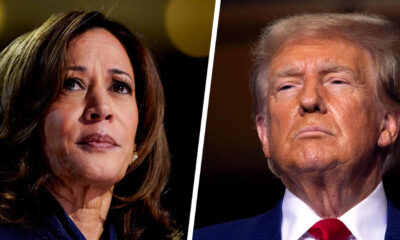
 Politics10 months ago
Politics10 months agoWhat 7 political experts will be watching at Tuesday’s debate
-
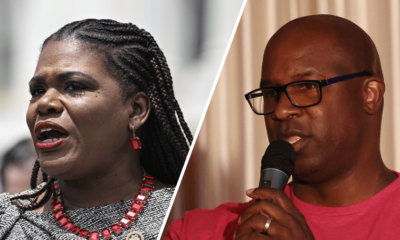
 Politics7 months ago
Politics7 months agoFormer ‘Squad’ members launching ‘Bowman and Bush’ YouTube show
-
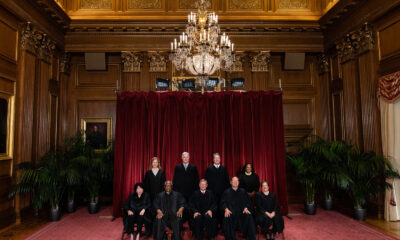
 Politics10 months ago
Politics10 months agoHow Republicans could foil Harris’ Supreme Court plans if she’s elected
-

 The Dictatorship7 months ago
The Dictatorship7 months agoPete Hegseth’s tenure at the Pentagon goes from bad to worse
-
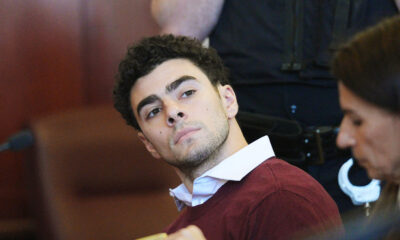
 The Dictatorship7 months ago
The Dictatorship7 months agoLuigi Mangione acknowledges public support in first official statement since arrest
-
Economy10 months ago
Fed moves to protect weakening job market with bold rate cut


